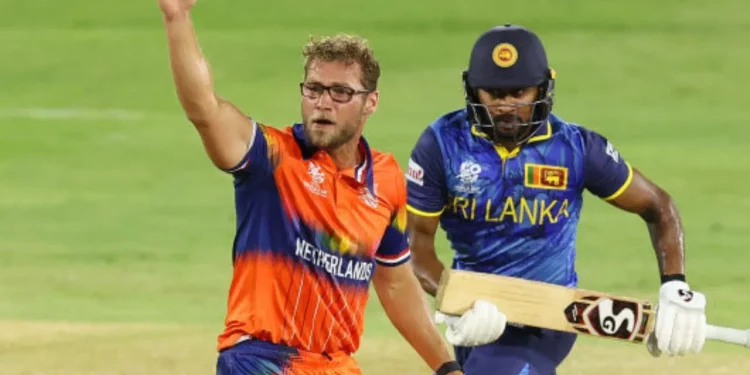Vivian Kingma, a pacemaker for the Netherlands, tested positive for a recreational substance and was given a three-month suspension. The 30-year-old acknowledged using the drug outside of competition and admitted to the crime.
Benzoylecgonine, a cocaine metabolite that is listed as a Substance of Abuse under the ICC Anti-Doping Code, was found in Vivian Kingma sample, which was collected after the Netherlands’ ODI match against the United Arab Emirates on May 12 in Utrecht during the ICC Men’s Cricket World Cup League 2. The prohibition goes into force on August 15. However, if Vivian Kingma successfully finishes a treatment program certified by the ICC, the three-month period can be shortened to one month. All of his records since the UAE ODI have been nullified in addition to the ban.
Kingma has taken two wickets for a total of 122 runs in two ODI matches against Nepal and Scotland, which are affected by this disqualification. It also features a Twenty20 International match against Scotland, where he was removed after bowling just three deliveries.
The incident involving Vivian Kingma is part of a recent pattern of recreational drug offences in international cricket.
Doug Bracewell of New Zealand and Kagiso Rabada of South Africa were both banned for recreational drug use in the previous 12 months. Following the players’ successful completion of ICC-approved treatment programs, the initial three-month suspensions in both cases were lowered to one month.
Rabada left the IPL 2025 early on April 3 when he acknowledged testing positive for recreational drugs and serving a provisional suspension. In a similar vein, Bracewell received a provisional suspension without opposition on April 11 following a positive analytical finding from an in-competition test conducted on January 13 during a Super Smash match between the Wellington Firebirds and Central Stags in Wellington.
The ICC continues to provide rehabilitative options while taking recreational drug usage seriously. Kingma’s case serves as a reminder of the stringent anti-doping policies in existence as well as the possibility for athletes to lessen penalties by participating in sanctioned treatment programs.







![Rashid Khan Shatters Saif Hassan’s Stumps [VIDEO] 7 Rashid Khan Shatters Saif Hassan’s Stumps [VIDEO]](https://onecricket.pro/wp-content/uploads/2025/09/AP25259554626375-1758036932-75x75.webp)